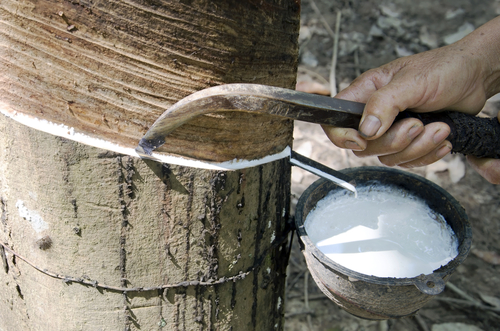The history of rubber from the Maya to the modern age
History of rubber: From the Maya to the modern age
The history of rubber begins for most people in the modern age. After all, plastic is one of the most widely used raw materials in the world today. But in fact, people actually built with it almost 2000 years ago - and they did so quite naturally!
The beginnings of the rubber age
That millions upon millions of products today benefit from the positive properties of rubber is due to the discoveries of the Maya. As early as the 3rd century A.D. the Central American natives used rubber - or at least an original form of it.
Rubber has its natural beginning in the milk of the rubber tree. When it is extracted from the cut bark and dried, a sticky, rubbery mass is formed.
How was rubber used in the past?
The material was first used in the Flummi, a bouncing cue ball. The Aztec ruler Montezuma is said to have owned entire playhouses full of rubber balls!
But the practical use was soon discovered:
To make fabrics water repellent.
To seal boats.
To catch birds on sticky branches.
Incidentally, even Columbus reported on the material in 1495 - but did not see the potential."

The path to modernity
It was not until 1743 that the natural scientist Condamine came up with the idea of bringing rubber to Europe. But on the long boat trip it became solid and thus unusable.
A few decades later, the solution - or solvent - made the material malleable even after transport. Now rubber shoes, hot-air balloons or raincoats could also be produced in Europe.
But this was far from perfect. Because at very cold or warm temperatures, the rubber became either brittle or sticky.
This could only be solved by vulcanization. Charles Goodyear invented this process by heating the rubber with sulfur. Now the material was low-odour, more elastic and could be used in wind and weather.
Thereby the rise of the rubber
With the mass production of automobiles at the beginning of the 20th century, the demand for car tires also increased. Their main component? Rubber!
At that time, however, the rubber tree could only be cultivated in tropical regions, especially in Brazil or the Congo. In the course of colonialism, the growing areas were exploited. Hard slave labour or bloody battles for plantations increased with the rise in demand.
Thereby it could not go on.
Thereby rubber became plastic
In 1909, the German chemist Fritz Hofmann developed a process to produce rubber synthetically. Formerly from coal and lime, today from crude oil.
The term rubber was originally used to describe rubber, but today rubber is a versatile material from the group of elastomers. In the modern world, rubber has become an indispensable material. There is hardly any area of technology in which the flexible material rubber would not play a role. The sometimes somewhat underestimated term rubber has countless qualities such as NR natural rubber, EPDM, NBR, CR neoprene ecc.
The rubber properties and compounds can be adapted to the respective application.
Vibraplast AG has a wide range of rubber products such as rubber moulded parts, rubber profiles, rubber seals, rubber sheets, etc.?
Further information about elastomer technology can be found here.?
?

